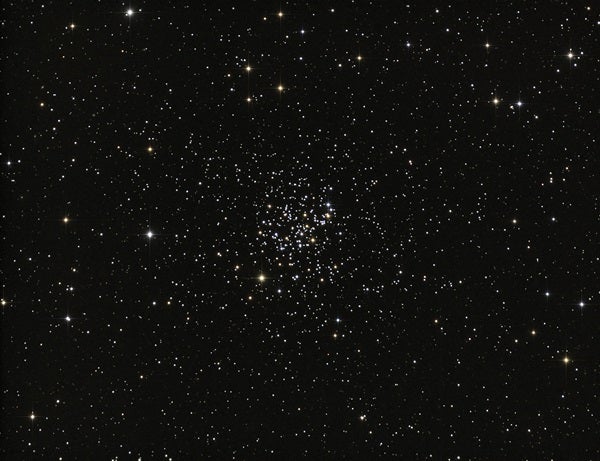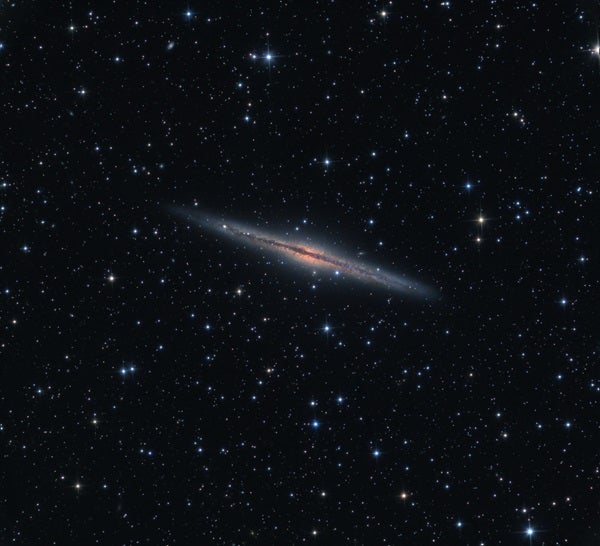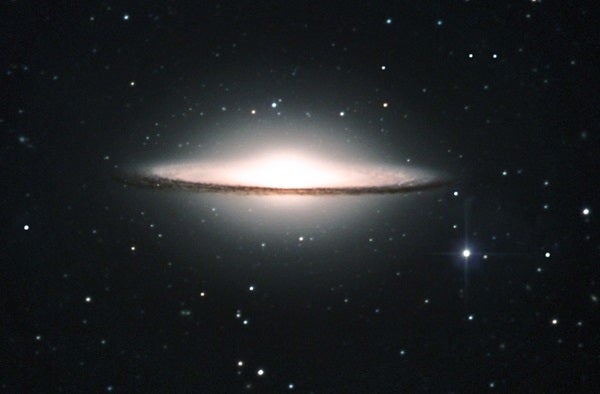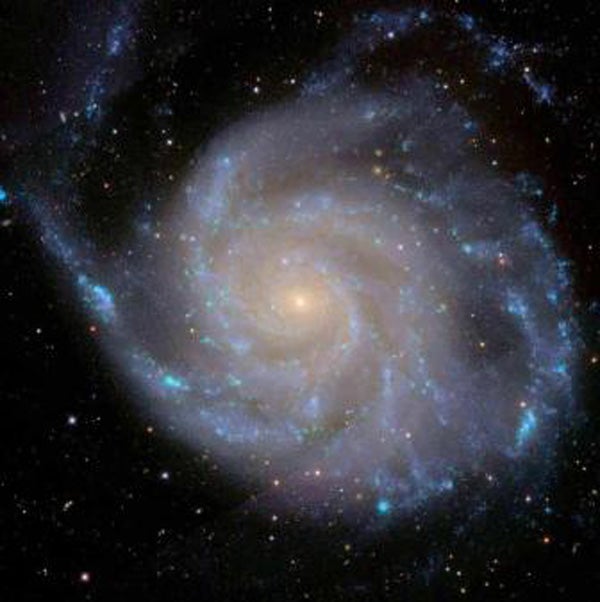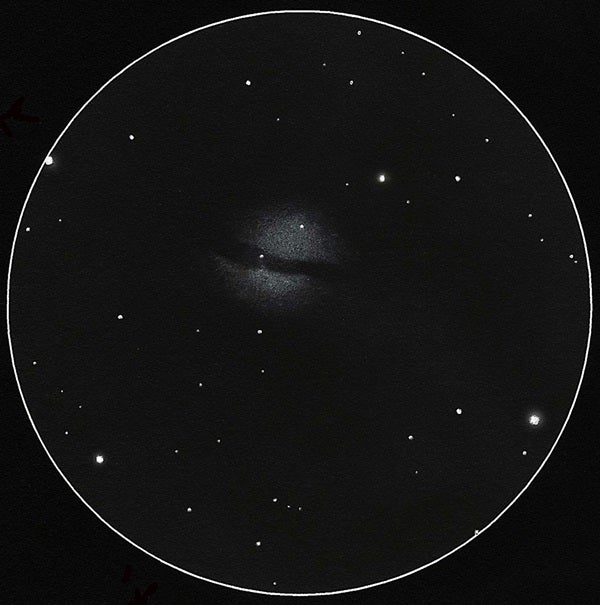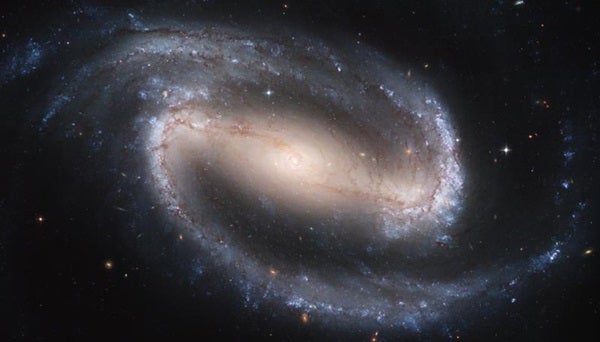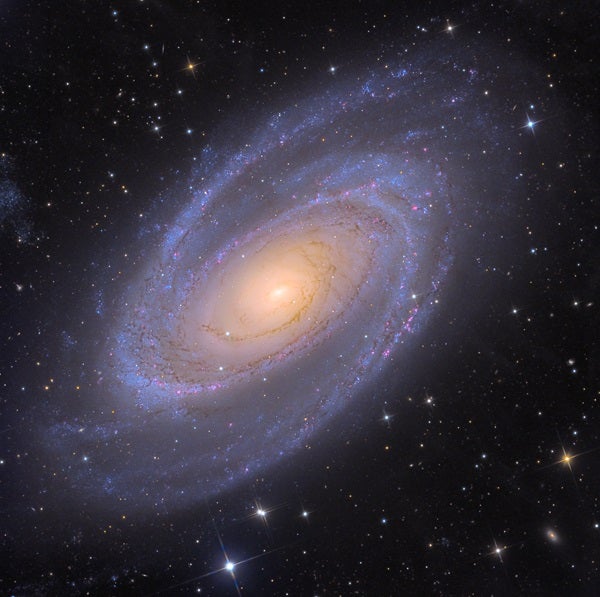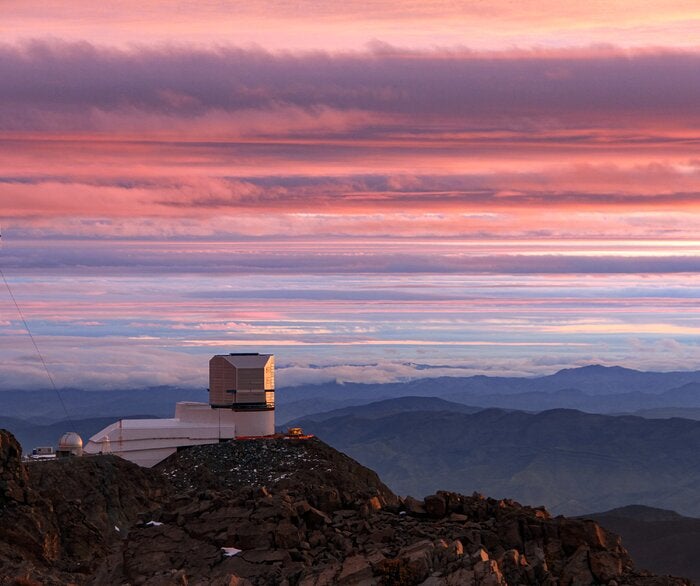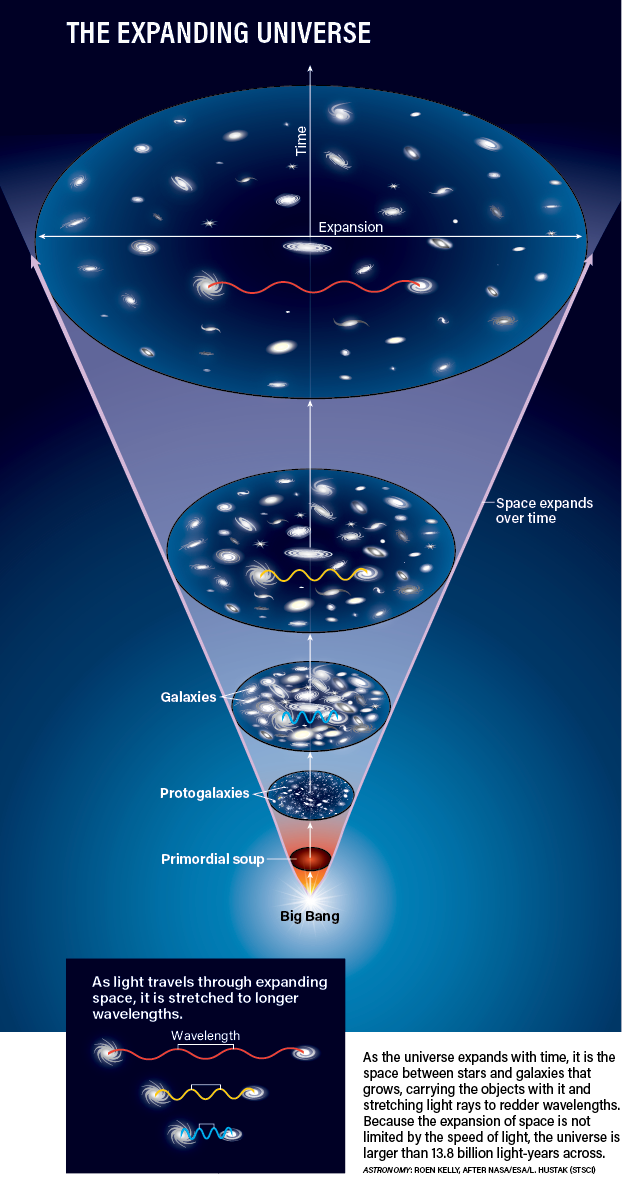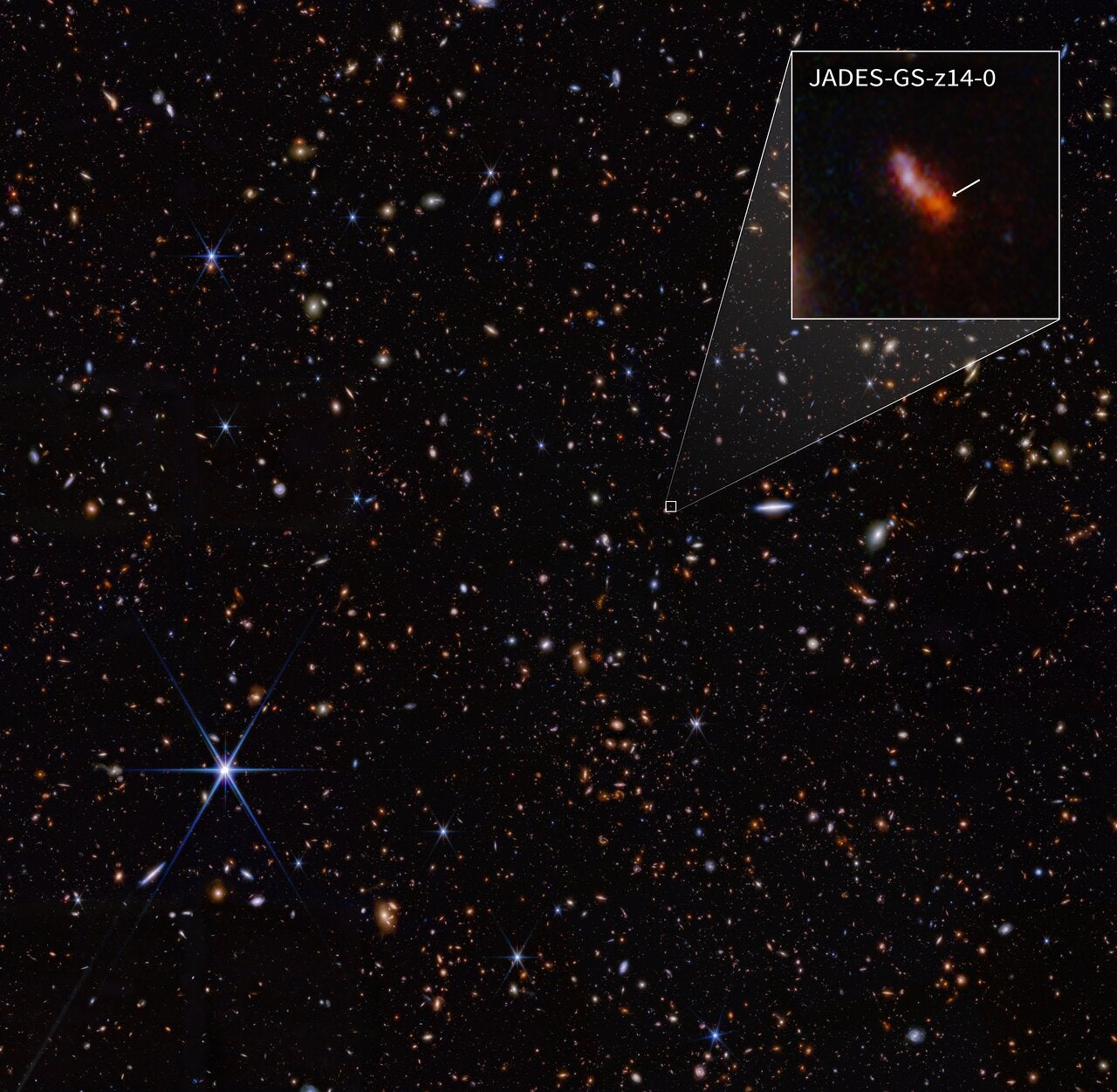In this environment, a new television program debuted Monday, September 16. Each episode began with a brief scene followed by a “Control Voice” speaking the words, “There is nothing wrong with your television set. Do not attempt to adjust the picture. … You are about to experience the awe and mystery, which reaches from the inner mind to [dramatic pause] the Outer Limits.”
A total of 49 black-and-white episodes of The Outer Limits aired over two seasons. But although the show ran only for a few years, it forever changed the face of televised science fiction. The first episode, “The Galaxy Being,” addressed the possible danger involved in contacting an extraterrestrial. By the end of the hour, I was hooked! The last thing that caught my eye, however, even at the tender age of 10, was the sequence that concluded each episode: As the credits rolled, eight deep-sky objects appeared in the background.
The members of this group — one open cluster and seven galaxies — are all spectacular targets, especially for beginning observers with small- to medium-sized telescopes who have access to a dark observing site. In order of their appearance during the credits, they are M67, NGC 891, M104, M101, NGC 5128, NGC 1300, M81, and M31. Let’s take a detailed look at each of these celestial jewels so that, on the next clear moonless night, you can begin your journey to [dramatic pause] the outer limits.
M67
Our first target is the “other” open cluster in the constellation Cancer — in other words, not the more famous Beehive Cluster (M44). You’ll easily find M67 through binoculars or a small telescope 1.7° due west of magnitude 4.3 Alpha (α) Cancri. At magnitude 6.9, M67 glows just past the limit of the human eye.
Through a 4-inch telescope, you’ll resolve roughly two dozen stars in M67 across an area two-thirds the width of the Full Moon. Increase the aperture to 6 inches, and 50 stars will shine forth. The official listed diameter of M67 is 29′, which is almost identical to the Full Moon.
A dozen of M67’s stars shine brighter than 11th magnitude. When you view the cluster through a telescope, you’ll undoubtedly notice a yellow star on its northeastern edge. Identified as SAO 98178, this star shines at magnitude 7.8 but is not a member of the cluster.
NGC 891
You know, second place is fine if people remember you. NGC 891 is the second-best galaxy in the constellation Andromeda. Not bad, except the constellation’s top dog happens to be one of the sky’s supreme wonders: the Andromeda Galaxy (M31, the last entry on this list).
Despite often being overshadowed, NGC 891 ranks as one of the sky’s best edge-on spiral galaxies. It inclines only 1.4° to our line of sight. Its more than 4-to-1 length-to-width ratio (13.0′ by 2.8′) and magnitude 9.9 brightness easily earned it the nickname the “Silver Sliver.” But it has another common name as well, given to it sometime within the past half-century: the Outer Limits Galaxy.
To find NGC 891, locate magnitude 2.2 Almach (Gamma [γ] Andromedae) and move 3½° due east. I’ve really enjoyed the views I’ve had of this object through small scopes. True, not much detail is visible, but you’ll immediately see why this object earns the “sliver” descriptor.
You’ll do better if you can move up to a 10-inch telescope, which reveals a symmetrical object about 10′ long with a noticeable but narrow central bulge. A dark dust lane bisects the galaxy and runs nearly its entire length. This is a really cool feature to spot, so it’s definitely worth waiting for the seeing (atmospheric steadiness) to improve. Additionally, dozens of foreground stars populate the field, which adds the third dimension of depth to the view.
At magnifications above 200x, note the sections of NGC 891’s nucleus on each side of the dust lane. The western section glows slightly brighter. Likewise, the galaxy’s disk to the southwest outshines its lesser half, which lies to the northeast.
M104
Deep within Virgo sits a showpiece spiral galaxy guaranteed to delight amateur astronomers and the general public alike. It’s easy to see why the creators of The Outer Limits selected this object for the credits sequence. The Sombrero Galaxy is undoubtedly one of the finest objects you can see through a small telescope.
But permit me a bit of science. M104 was the first galaxy astronomers discovered with a large redshift, which refers to the magnitude of the galaxy’s motion away from us caused by the universe’s expansion. In 1912, American astronomer Vesto M. Slipher discovered the Sombrero Galaxy was moving away from us at a speed of 2.2 million mph (3.6 million km/h).
At magnitude 8.0, M104 is a bright spiral galaxy. And that brightness is confined to a relatively small area measuring only 7.1′ by 4.4′. Because it is both bright and small, the galaxy’s surface brightness is relatively high, which makes it easy to see. To find it, point your telescope 5½° north-northeast of magnitude 2.9 Algorab (Delta [δ] Corvi), or 11° west of Spica (Alpha Virginis).
The Sombrero Galaxy’s lens shape and the dark dust lane that splits it are easy to spot. What’s more, the galaxy’s two sections have unequal brightnesses — the north outshines the south because M104 inclines 6° to our line of sight. The dust lane, therefore, appears to cross a bit south of center from our perspective.
Through a 4-inch telescope, you may detect the dust lane, but only near the Sombrero’s center. The core is bright, and a large halo surrounds it. It even extends above and below the sections of the spiral arms nearest the nucleus.
M101
Only one thing prevents spiral galaxy M101 from making every observer’s top 10 list: its surface brightness. Covering slightly more area than the Full Moon, M101’s light spreads out so much that only large amateur telescopes (those 12 inches and larger in aperture) do it justice. That’s not to say you can’t see it through smaller scopes; I just want you to reduce your expectations a bit.
M101 represents one of the sky’s “grand design” spiral galaxies — one with prominent and clearly defined spiral arms. Usually, the arms mostly or completely envelop such galaxies. Only about 10 percent of all spiral galaxies fall into the grand design category.
This wonderful object lies in the constellation Ursa Major. To get a rough idea of its position, make the base of an equilateral triangle with the end two stars of the Big Dipper’s handle; M101 marks the triangle’s third point above. Alternatively, it lies 1.5° east-northeast of the magnitude 5.7 star 86 Ursae Majoris. M101 glows at magnitude 7.9 and has a diameter of 40′.
From a dark site through a large telescope, look for M101’s multiple spiral arms. The core is concentrated but broad, not starlike. Many star-forming regions and stellar associations (loose open clusters) lie along M101’s spiral arms. In fact, at least five — NGC 5447, NGC 5455, NGC 5461, NGC 5462, and NGC 5471 — are bright enough to have their own NGC numbers. Of these, NGC 5447 is the most prominent. Find it 6′ southwest of M101’s core. Several other objects within M101 once carried catalog designations, but astronomers no longer recognize them. Use a nebula filter to tell the difference between star-forming regions and associations. The filter will dim the stars within the associations, but not the nebular gas of the star-forming regions. This technique will help you see the glowing hydrogen clouds better.
NGC 5128
One note about the objects as they appeared in The Outer Limits: Starting with this one, the final four images were reversed.
Seeing NGC 5128 high in the sky is one of the thrills of Southern Hemisphere observing. Skygazers there call it the Hamburger Galaxy because two stellar regions (the bun) surround a dark, dusty lane (the burger). Its more common name is Centaurus A, because it was the first radio source identified in the constellation Centaurus.
Unfortunately, most northern viewers get only a taste of this object’s details. For example, even from southerly Tucson, Arizona, NGC 5128 climbs to a maximum altitude of 15°. Viewing any object through that much of Earth’s atmosphere presents a distorted view. For best results, head farther south.
NGC 5128 is a peculiar galaxy that glows at magnitude 6.7. It’s not quite round, but it is big, with dimensions of 31′ by 23′. To find it, look 4½° west of magnitude 3.5 Mu (μ) Centauri.
Scottish astronomer James Dunlop discovered NGC 5128 in 1826, and published the observation within a list of 629 objects titled “A catalogue of nebulae and clusters of stars in the southern hemisphere, observed at Parramatta in New South Wales,” which appeared in volume 118 of the Philosophical Transactions of the Royal Society.
NGC 5128’s appearance arises from a galactic collision. The main body of Centaurus A — a giant elliptical galaxy — is absorbing a smaller spiral galaxy. The two objects collided more than 200 million years ago, causing huge bouts of star formation.
Through small telescopes, NGC 5128 appears round with a wide, dark lane cutting the galaxy in half. Use a 12-inch or larger scope, and you’ll see a thin wedge of light shining through the lane’s western end. That lane widens on both ends.
NGC 1300
NGC 1300 in the constellation Eridanus has a simple shape: that of a squashed letter S. Once you observe it, I’d wager you’ll find yourself returning to view this celestial wonder again and again. Better yet, show it to your friends. It’s a classic barred spiral galaxy with two arms, both of which originate from the ends of the bar and move out at right angles to it.
To find NGC 1300, look 2.3° due north of magnitude 3.7 Tau4 (τ4) Eridani. Although, at magnitude 10.4, it’s the faintest object on this list, its light covers a small region of only 5.5′ by 2.9′, so it’s not hard to spot even through small telescopes.
If you have an 8-inch or larger scope, crank the magnification past 200x and look first for the bright oval nucleus. It’s twice as long as it is wide. The next features that will become evident are the beginnings of the spiral arms. They’re quite clumpy near the nucleus. Finally, if you’re viewing through a 16-inch or larger scope, try to trace the thin spiral arms as they tightly curve past the nucleus on the northern and southern side.
M81
To view our penultimate wonder, head to the northwest section of the constellation Ursa Major the Great Bear, where you’ll find M81, one of the sky’s brightest galaxies. It is located 2° east-southeast of the magnitude 4.5 star 24 Ursae Majoris. It glows at magnitude 6.9 and measures 24′ by 13′.
German astronomer and celestial cartographer Johann Elert Bode discovered this object December 31, 1774, so its common name is Bode’s Galaxy. (He also found the nearby irregular galaxy M82.) French astronomer Pierre Francois André Méchain independently discovered both galaxies five years later and reported them to Charles Messier, who added them to his classic list.
Bode’s Galaxy glows brightly enough to show up through binoculars, but the larger the telescope you can point at it, the better. Through an 8-inch scope, you’ll see a large, bright central region surrounding the much brighter core. Through a 12-inch instrument, you’ll detect how the spiral arms wind tightly around the core. The easternmost appears brighter. Unfortunately, you won’t detect any dust lanes or star-forming regions through amateur scopes of any size.
M81 is the brightest member of the M81 Group, one of the closest galactic groups to our own Local Group. The M81 Group contains about a dozen galaxies and lies 12 million light-years away. Other members of this group include M82, NGC 2403, NGC 2366, and NGC 3077.
M31
Like The Outer Limits, I’ve saved the best for last. The northern sky’s greatest galaxy gets its familiar name from the constellation where it resides, Andromeda the Princess. This galaxy is the nearest large spiral, and it sits at the far end of the Local Group of galaxies. And in this case, nearness equals brightness: magnitude 3.4.
Observers have long described M31 as something other than starlike. For instance, in A.D. 964, Persian astronomer Abd al-Rahman al-Sufi called it a “little cloud” in his Book of Fixed Stars. German astronomer Simon Marius (1573–1625) was the first to study M31 telescopically. He described it, “Like the flame of a candle seen through horn, and like a cloud consisting of three rays; whitish, irregular and faint; brighter toward the center.” Messier cataloged the object on August 3, 1764: “The beautiful nebula of the belt of Andromeda, shaped like a spindle; it resembles two cones or pyramids of light, opposed at their bases.”
In 1888, British astronomer Isaac Roberts became the first to photograph the spiral structure of M31. In 1912, V.M. Slipher first measured M31’s radial velocity (the speed of a celestial object toward or away from us). He found its velocity far surpassed that of any other object, and his measurement helped prove M31 lay far from the Milky Way. In 1923, Edwin Hubble measured a Cepheid variable star in M31 and confirmed its extragalactic nature.
Observers approach the Andromeda Galaxy in one of two ways: Some opt for low-power optics to take in the entire view, which includes M31’s nucleus, dust lanes, and two companion galaxies, M32 and NGC 205. If this is your approach, try to trace M31’s full length, which equals six Full Moons side by side (185′ by 75′).
Other amateur astronomers eschew wide-field views of the Andromeda Galaxy in favor of greatly magnified looks at small regions through large telescopes. If this plan appeals to you, use as big a scope as you can, and crank up the magnification to 300x or more. The central region will still be featureless, but it will pay for you to scan M31’s spiral arms for bright clumps, which indicate star-forming regions.
Good luck on your voyage to [dramatic pause] the outer limits.

